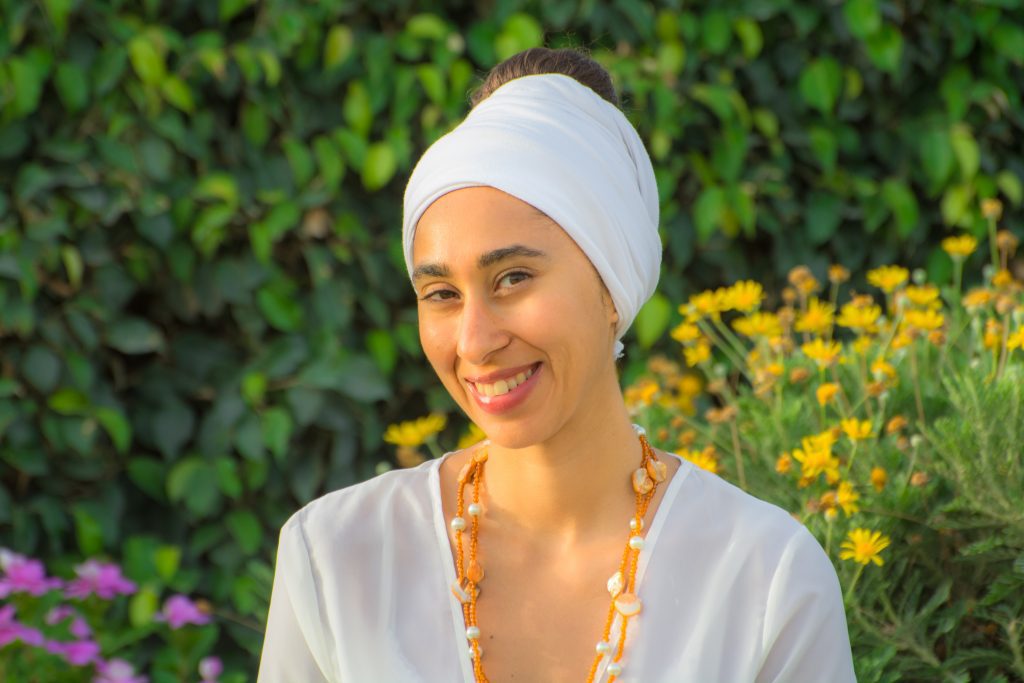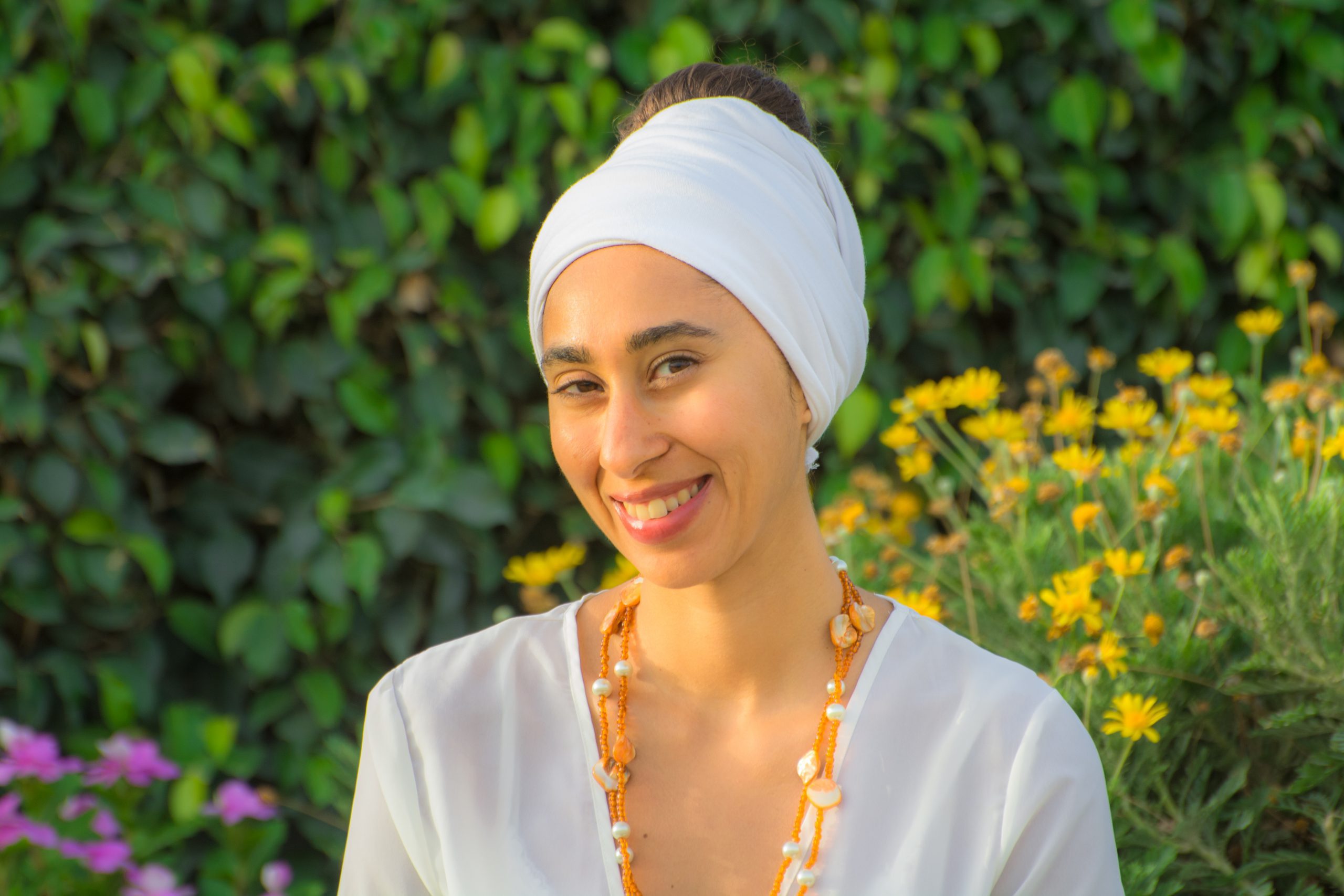A Q&A with Shama Kaur, who selected the meditations and put together the materials for The Kundalini Meditation Oracle
Shama Kaur is an Egyptian KRI Certified Lead Trainer, Health & Wellness Mentor. At the age of 25, Shama completed the Level 1 Aquarian Trainer program in the United States. Ever since she has been pioneering the spreading of Kundalini Yoga across the Arab world. Her teaching adventures have taken her across Egypt to Dubai, Palestine, Jordan, Morocco, Tunisia and Kuwait. As an artist and musician, Shama Kaur has a passion for helping every soul to raise their consciousness, heal and find their path to greatness not only through yoga but also music and arts. Shama Kaur is also the founder of YallaYoga Center, a social enterprise delivering professional yoga education and training.

What inspired you to come up with this collection of meditation cards?
Like many of you, when I have a deep passion for the work that I do, I become totally consumed by it and unable to stop. When the entrepreneurial facet of the mind combines with the executive mind, I feel hijacked and become totally absorbed in completing a project to the end, regardless of how I am feeling in the moment physically, mentally, emotionally, and energetically. Deep within, I hear a voice that says: “Stop! All you need is 11 minutes. Only 11 minutes to meditate and whatever you do after that will be 10 times better!”
But my body-mind struggles to stop and search for the right meditation. The mere thought of looking through a manual or browsing online in search of the “right” meditation was far too daunting and often sent me off in spirals of possibilities to choose from.
Until one day, I had the thought: “If only there was a deck of cards of some of my favorite meditations right here which I could easily shuffle through and pick from… this would save me plenty of time and energy!”
So I started writing out my favorite meditations on simple cards and using them to pause. While I was meditating using the first card, I was inspired to expand this idea and make this deck of cards available for all to enjoy!
How was the process of defining the suits and picking up the meditations?
One of my favorite ways to teach is through a series of classes with a common theme weaving through them. I have taught courses on the Ten Bodies, the Seven Chakras, the Yamas and Niyamas, and the Five Elements. Thus, the inspiration for the suits came quite naturally.
What took a little more time was the process of selecting meditations for each suit and the theme of each card. This is when I invited HariShabad Kaur, the KRI Managing Editor, to also contribute to the selection of the meditations and come up with the virtues for each of the yogic concepts we picked up.
What new things did you learn while selecting the meditations and writing about each one of the cards?
I really enjoyed writing about the cards because this helped me dive deeper into the teachings and link them to my personal experience. Due to my prior teaching experience, it was much easier for me to write about the Ten Bodies, Seven Chakras, the Guna and Five Elements. It was more challenging to write about the Seven Steps of Happiness and the Yamas and Niyamas. Even though I understood the “what” and “why,” I often could not find the right words to describe some of the words in the suits. This inspired me to teach a seven-part series on the Seven Steps to Happiness, and I am currently working on a course for the Yamas and Niyamas.
Have any other decks of cards inspired you?
Though I have never used any deck of cards consistently, I am inspired by how many people use them in their daily lives, especially the Osho tarot cards and the Bhagavad Gita cards.
Which of the 60 meditations you chose is (are) your favorite?
The two meditations that I enjoy the most are; 1) Deep Meditation into Thoughtlessness, which is Card 7 in the Eight Limbs of Yoga suit relating to Dhayana or the virtue of Integration; and 2) The Four Stroke Breath to Build Intuition, on Card 17, which relates to Svadhyaya or the virtue of Self-Study in the Yamas & Niyamas suit. These meditations allow me to feel more aligned and integrated instantly. I like that the meditations are not physically challenging and can be done anywhere. They allow me to swiftly dive inwards and gain clarity and focus before I go outward to relate to the world.
Tell us about an inspiring experience you have had with one of the meditations.
The first meditation card that I used was “The Four Stroke Breath to Build Intuition”. I picked this card from the first draft version of this project, a small set of 12 hand-made cards that I made for myself at home even before the launch of this project. During this meditation, I received the inspiration to expand this project in collaboration with KRI. I knew then who would be the contributors, including Aliaa Salah, the illustrator, and Hari Shabad, KRI Editor, and our wonderful reviewer, Siri Neel Kaur.
Has the production of this Kundalini Meditation Oracle already changed the way you relate to your practice?
Absolutely. I am now meditating with a new card almost every day! This is really wonderful because, after teaching for many years, I felt stuck in a rut of repeating the practices that I liked most or were familiar with. But with these cards, I can expand out of my comfort zone by choosing meditations that may seem “random,” while in fact, the meditation card that we choose is chosen intuitively and aligns with our current frequency and something that we need at that exact moment.
How do you expect this oracle to be used and enjoyed or inspire people with their practice?
I think this Kundalini Meditation Oracle can inspire teachers to deliver classes following one of the suits that are in the card decks. The meditation decks can be supplemental in a class setting and offered as homework at the end of the class. I also think that the cards that are intuitively chosen can inspire practitioners to look deeper into themselves to see to what extent the virtue of the chosen card relates to them and is applied in their own lives. After that, they can take small steps to embody this virtue in their lives and then perhaps feel more confident to teach a workshop on this card/virtue.
Teacher

In 2012 Shama Kaur became the first Egyptian Kundalini Yoga Teacher & Trainer. In Arabic ‘Shams’ means sun and ‘Shama’ means candle, and together her name means ‘the one who shines the light of her inner soul.’ She began teaching yoga in Egypt and is the founder of YallaYoga, an innovative Social Enterprise serving as both a yoga educational institute and a healthy lifestyle community center. Her passion for this mission has taken her across the Middle East and North Africa, where she has taught in Jordan, Kuwait, Palesinte, Dubai, Morocco and Tunis. As a Professional Trainer in ATA, she has also launched or taught in Level I and 2 Teacher Training Programs in the Mid East including Palestine, Egypt and Dubai.


 Français
Français Deutsch
Deutsch Italiano
Italiano Português
Português Español
Español 简体中文
简体中文
More Related Blogs